
The Norwegian Police Security Service is the police security agency of Norway. The agency was previously known as POT, the name change was decided by the Parliament of Norway on 2 June 2001.

The Norwegian Police Service is the Norwegian national civilian police agency. The service dates to the 13th century when the first sheriffs were appointed, and the current structure established in 2003. It comprises a central National Police Directorate, seven specialty agencies and twelve police districts. The government agency is subordinate to the Ministry of Justice and Public Security and has 16,000 employees, of which 8,000 are police officers. In addition to police powers, the service is responsible for border control, certain civil duties, coordinating search and rescue operations, counterterrorism, highway patrolling, writ of execution, criminal investigation and prosecution. The directorate is led by National Police Commissioner Odd Reidar Humlegård.
The Norwegian Safety Investigation Authority is the government agency responsible for investigating transport-related accidents within Norway. Specifically, it investigates aviation accidents and incidents, rail accidents, maritime accidents, select traffic accidents, and serious incidents in the defence sector.
The Joint Rescue Coordination Centre of Northern Norway or JRCC NN is a rescue coordination center located in Bodø which is responsible for coordinating major search and rescue (SAR) operations in Norway north of the 65th parallel north. Its area of operation includes Svalbard, but excludes Jan Mayen. Established in 1970, it is a government agency subordinate to the Ministry of Justice and Public Security and led by the Chief of Police of Salten Police District. The agency has twenty-three employees and has at least two rescue controllers at work at any time.

The Joint Rescue Coordination Centre of Southern Norway or JRCC SN is a rescue coordination center located in Sola which is responsible for coordinating major search and rescue (SAR) operations in Norway south of the 65th parallel north. Established in 1970, it is a government agency subordinate to the Ministry of Justice and Public Security and led by the Chief of Police of Rogaland Police District. The agency has twenty-three employees and has at least two rescue controllers at work at any time.
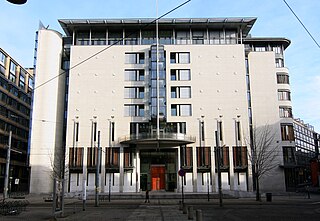
Oslo District Court is a district court located in Oslo, Norway. This court is based at the Oslo Courthouse in the city of Oslo. The court serves the entire city of Oslo and the court is subordinate to the Borgarting Court of Appeal. As the largest district court in Norway, it handles about 20% of all cases in the country. The court handled 3,000 criminal and 2,200 civil cases, as well as 7,200 summary proceedings in 2007.
Norway's elongated shape, its numerous internal geographical barriers, and the often widely dispersed and separated settlements are all factors that have strongly influenced the structure of the country's administrative subdivisions. This structure has varied over time and is subject to continuous review. In 2017 the government decided to abolish some of the counties and to merge them with other counties to form larger ones, reducing the number of counties from 19 to 11, which was implemented on 1 January 2020.

The border between Norway and Russia consists of a 195.7-kilometer (121.6 mi) land border between Sør-Varanger, Norway, and Pechengsky District, Russia, and a 23.2-kilometer (14.4 mi) marine border in the Varangerfjord. It further consists of a border between the two countries' exclusive economic zones (EEZ) in the Barents Sea and the Arctic Ocean. Between 1944 and 1991 the border was between Norway and the Soviet Union. There is a single border crossing, on E105, located at Storskog in Norway and Borisoglebsky in Russia. The Norwegian side is patrolled by the Garrison of Sør-Varanger and is under the jurisdiction of the Norwegian Border Commissioner, while the Russian side is patrolled by the Border Guard Service of Russia. Two-thirds of the border follows two rivers, the Pasvikelva and Jakobselva.
The Norwegian Public Safety Network is a public safety network system based on Terrestrial Trunked Radio (TETRA). Nødnett is implemented by the Directorate for Emergency Communication. The network is primarily used for internal and interdisciplinary communication by the police, fire departments and health services. Nødnett is also used by several organisations participating in rescue and emergency work. Planning of the network started in 1995 and in 2006 the contract to build it was awarded to Nokia Siemens Networks. As Nokia Siemens Networks was unable to complete the contract, it was passed on to Motorola Solutions in 2012. The critical infrastructure of Nødnett was finished and was operational in all districts of mainland Norway by December 1, 2015.
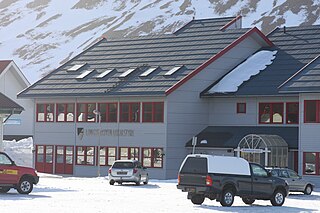
Longyearbyen Community Council is the local government for Longyearbyen in Svalbard, Norway. It has many of the same responsibilities of a municipality. It is organized with a 15-member council which since 2011 has been led by Mayor Christin Kristoffersen of the Labour Party. The council's main responsibilities are infrastructure and utilities, including power, land-use and community planning, education from kindergarten to upper secondary level and child welfare. It operates three kindergartens in addition to the 13-grade Longyearbyen School.
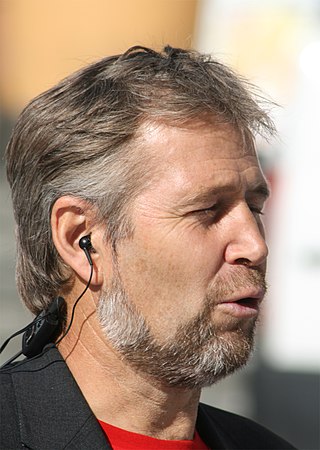
The Norwegian Police Federation is the trade union which organizes employees from all levels within the police force. The federation is a member of the Confederation of Unions for Professionals, Norway and the European Confederation of Police. It is illegal for police officers to strike. The organization was established in 1997. Arne Johannessen was head of the organisation from 2000 to May 2013.

The Norwegian National Road Policing Service, commonly known by its abbreviation UP, is a specialty agency of the Norwegian Police Service, subordinate to the National Police Directorate. Its main task is highway patrol, in addition to managing the police reserves. As its officers have full police power it will assist police districts is special circumstances. The agency is based in Stavern and was created in 1937, replacing the former State Police agency.
National Police Computing and Material Service is an agency of the Norwegian Police Service which has the responsibility for information and communications technology, procurement, security and real estate. Subordinate to the National Police Directorate, it was established in 2004.
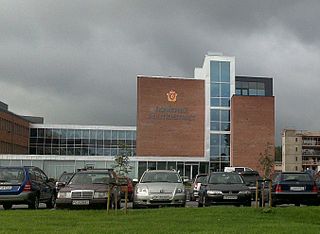
Romerike Police District is one of 27 police districts in Norway, covering the Romerike district of Akershus. The district is headquartered in Lillestrøm and consists of two police stations, at Lillestrøm and Gardermoen, and nine sheriff's offices. The district is led by Chief of Police Jørgen L. Høidahl. Specifically the police district covers the municipalities of Aurskog-Høland, Sørum, Fet, Rælingen, Lørenskog, Skedsmo, Nittedal, Gjerdrum, Ullensaker, Nes, Eidsvoll, Nannestad, Hurdal. As of 2011, the district had 651 employees. It has a special responsibility for the border control at Oslo Airport, Gardermoen.

Salten Police District is one of 27 police districts in Norway, covering the Salten district of Nordland. The district is headquartered in Bodø and consists of one police station and nine sheriff's offices. The district is led by Chief of Police Geir Ove Heir. Specifically the police district covers the municipalities of Bodø, Rødøy, Meløy, Gildeskål, Beiarn, Saltdal, Fauske, Sørfold, Steigen, Hamarøy) and two municipalities in Lofoten. As of 2011 the district had 195 employees. It has a special responsibility with the chief of police being responsible for operations at the Joint Rescue Coordination Centre of Northern Norway. The police district was renamed from Bodø Police District in 2002.
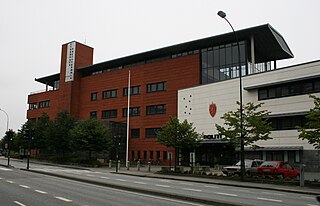
Rogaland Police District is one of 27 police districts in Norway, covering Rogaland except Haugalandet. The district is headquartered in Stavanger and consists of three police stations, at Stavanger, Sandnes and Eigersund, and 13 sheriff's offices. The district is led by Chief of Police Hans Vik. As of 2011 the district had 738 employees. The chief of police is responsible for the Joint Rescue Coordination Centre of Southern Norway at Sola. The police district was created in 2003 as a merger between the former Rogaland Police District and Stavanger Police District.
Eastern Finnmark Police Districtwas one of 27 police districts in Norway, covering the eastern part of Finnmark. The district is headquartered in Kirkenes and consists of three police stations, at Kirkenes, Vadsø and Vardø, and five sheriff's offices. The district is led by Chief of Police Ellen Katrine Hætta. Specifically the police district covers the municipalities of Vardø, Vadsø, Karasjok, Lebesby, Gamvik, Berlevåg, Tana, Nesseby, Båtsfjord, Sør-Varanger. As of 2011 the district had 165 employees. It has a special responsibility for the Norway–Russia border control at Storskog and the Reindeer Police. The police district was created in 2003 as a merger between the former Sør-Varanger Police District, Vadsø Police District and Vardø Police District.
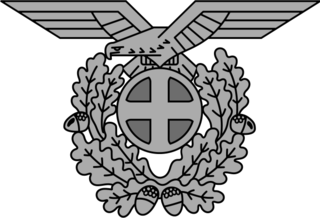
Statspolitiet was from 1941 to 1945 a National Socialist armed police force that consisted of Norwegian officials after Nazi German pattern. It operated independently of the ordinary Norwegian police. The force was established on 1 June 1941 during the German occupation of Norway. The initiative for the force came from the later chief Karl Marthinsen and other prominent members of the collaborationist party Nasjonal Samling. At its peak, in 1944 there were 350 employees in Statspolitiet, in addition to a larger number who collaborated or rendered services for them.

Emilie Enger Mehl is a Norwegian politician for the Centre Party. She has served as minister of justice since 2021 and Member of parliament for Hedmark since 2017.
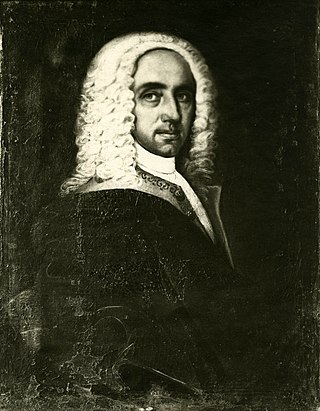
Fogd is a historical Scandinavian official title, translated as bailiff, relating to the administration of bailiwicks. He was in charge of the administration and collection of taxes on behalf of the government, either in a rural area or in a town.















